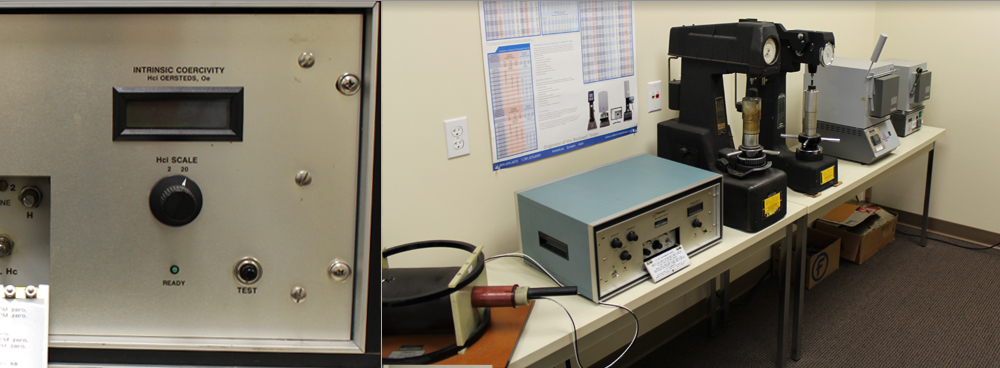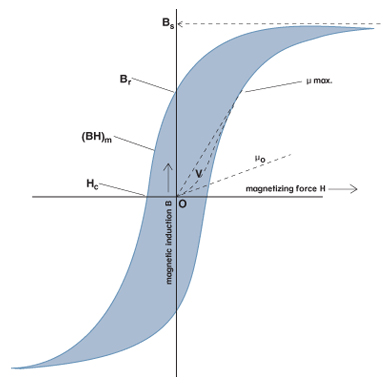Magnetic Terms and Definitions
Pictured to the left is a hysterisis curve for a ferromagnetic material. This illustrates the changes in induced magnetic field (B) created by changes in the magnetic field (H).
Important terms and definitions needed to understand the behavior of electromagnetic materials are as follows:
Permeability – This is the ratio of induced field strength to magnetizing field strength (B/H), and is more important in AC electrical applications.
Saturation Induction (Bs) – The induced magnetization reaches a maximum, and changes little with large increases in magnetizing field strength. Also referred to as Bm, maximum induction.
Remanent Magnetism (Br) – The remaining magnetism retained by the material when the magnetizing field is removed, or returned to zero. Also called residual induction.
Coercive Force (Hc) – A magnetic field must be applied to remove the remanent magnetism, and this is the coercive force, or coercivity. Soft magnetic materials such as steels for relays and solenoids, are characterized by low values. Permanent magnets have high remanent magnetism and coercivity values.
Core Loss – This value is represented by the area inside the hysteresis curve, and is important in AC applications. Core loss reflects the amounts of energy lost through inefficiencies into heat buildup, and generally is expressed in watts/pound.



We are conveniently located at:
Bristol, CT 06010
USA